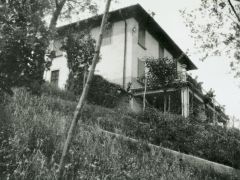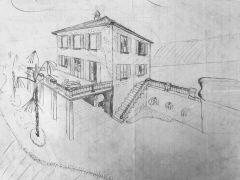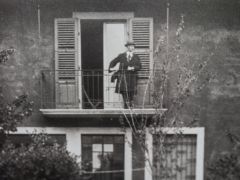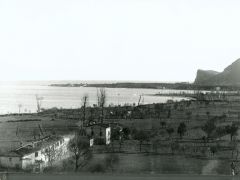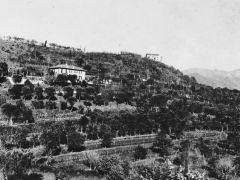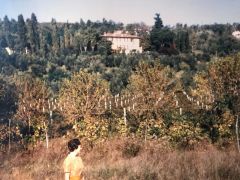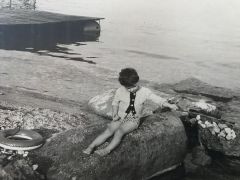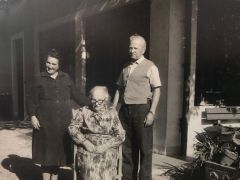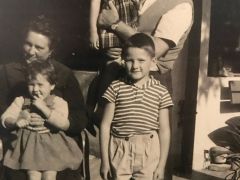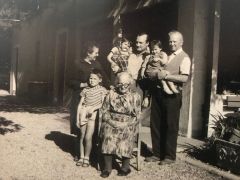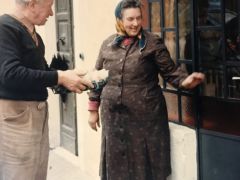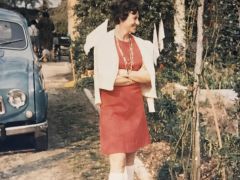The story of Villa Schindler
The story of Villa Schindler is somehow connected with the history of the Economy of Northern Italy. The owner, Niklaus Schindler, was of Swiss origin (from Canton Glarus in Central Switzerland); he was one of the Swiss entrepreneurs who introduced the textile industry into Northern Italy, as the Leglers (who possessed textile factories at ponte San Pietro, near Bergamo, where thousands of workers were employed), the Heftis, the Zopfis, the Abeggs. This particular industry became one of the most important fields in the economy.
Schindler possessed a cotton-mill at Roé, which exploited water power from the river Chiese and employed more than one thousand people. Niklaus Schindler was friend with a large landowner called Bellini, who possessed a beautiful house at San Felice as well as numerous landed properties such as Villa Schindler. Bellini became the manager of the Banca Popolare, even though he had not a deep technical knowledge. After some time the bank failed and he was considered the responsible for that. A prosecution started against him and he was sentenced to imprisonment. Niklaus Schindler granted him a loan, so that he was able to settle his debts. However a petition in bankruptcy was filed, and Niklaus Schindler bought Bellinis landed properties as well as his houses at San Felice and Manerba. In the area where Villa Schindler is situated, he built a house for his holidays on the remains of Roman walls and began to put the farm on its feet again. A family of share-farmers worked for him, while he provided the land and the tooling; the produce was equally shared. Owing to this collaboration, Niklaus Schindler was able to create a self-sufficient farm around Villa Schindler. The farm supplied the kitchen, so he had to buy only coffee and sugar. In 1930 Niklaus Schindler moved from Roè to Villa Schindler; then he added a balcony, a cellar, and three bedrooms (n°8, n°9, n°1) to the house, which began to have a new appearance.
During the Second World War Villa Schindler, being a Swiss property, became an extra-territorial area which was never attacked by either sides. An inscription (above its door) dating back to that period has been recently restored. After the Second World War the share-farming was abolished and Federico Schindler, Niklaus Schindlers eldest son, began to manage it as an owner-occupier. His property was known for its excellent wines, grapes, extra-virgin olive oil and fruits which were produced there and were sold to the local hotels. Niklaus Schindler was the President of the Lutherans of Gardone. Every summer Clergymen from Germany came to Lake Garda and they were habitués of Villa Schindler. In 1960 agriculture collapsed in the area of Lake Garda. Farmers were obliged to search for jobs in local firms. It was impossible to find people who were prepared to do agricultural labours, such as olive harvesting Federico Schindler was forced to close the farm. However he went on giving hospitality to shepherds and began to put guests up. So he started a boarding-house and went on running it. In 1970 Federico Schindler, who was sixty-nine years old, decided to move to a flat at Salò. As neither his brothers nor his nephews meant to manage the farm, which was sold to the Brottos.
From 1970 to 1987 the house was rented to several families which came here on holiday, but since 1987 Mrs. Anna Brotto has changed Villa Schindler into a romantic hotel. In fact she managed to re-create the original atmosphere of the place and to restore the old stuccoes and frescoes. The wonderful frieze under the roof, characterized by Celtic and liberty-style decorations has been accurately restored too. Even the liberty-style fresco of the café dates back to the beginning of the 20th century. The restoring of the rooms and the building of the bathrooms have been carried out without many alterations to the original plan. Room n° 3, for instance, which is situated on the north side of the house, still maintains the same width as in the past: as it was used as a pantry, the original hooks have been left attached to the hand-painted beams. The gardens we can admire now (area: 25000 sq m) are only a small portion of the former farm. Centuries-old species of olive trees have survived, while the pomegranate trees and other fruit trees have died; also the asparagus fields and the kitchen gardens have disappeared. The kitchenettes, which are in the basement for the use of the guests, contain some pieces of furniture from the old farm. Also the new pantry was used to keep food in the past, so was the wine-cellar with its 500/1000 liter oak barrels, and its concrete barrels: both of them have been accurately restored. Owing to the cooperation of local farmers the old tradition has survived : Federico Schindler produced excellent red / white wines made from Trebbiano grapes. Nowadays the guests are still offered the same wines, as well as high-quality extra-virgin olive oil, grappa, plain vinegar and local balsamic vinegar. The cotton-mill of Roé has been closed for a long time and the farm has been closed down. However, owing to Mrs. Brotto, Villa Schindler still welcomes its guests. In 1995 it was included in the survey " Ben Tornati " (" Welcome ") and classed as one of the best hotels in Italy by the Touring Club.
A special thanks for the precious collaboration to family Schindler and to Ms. Dormann.




